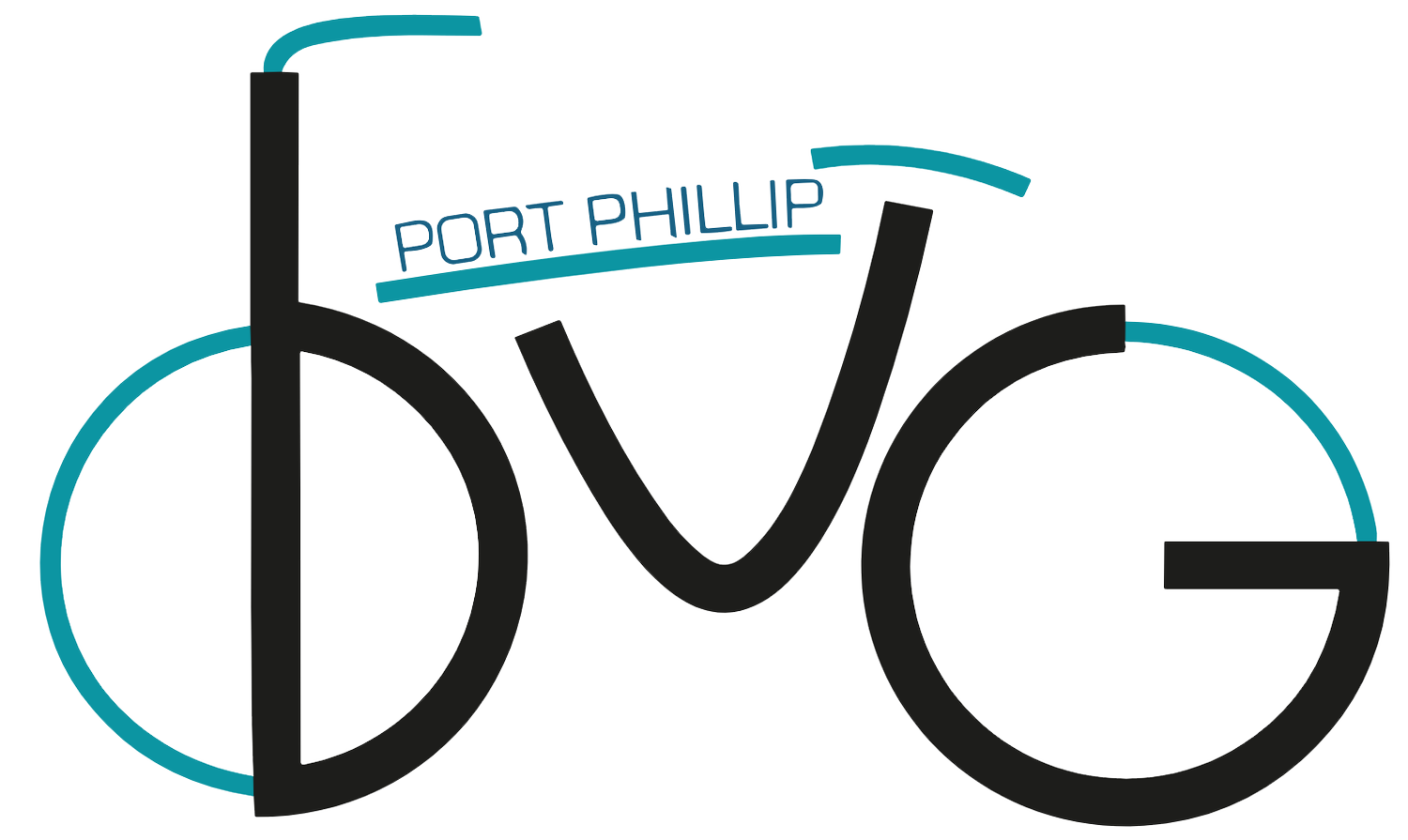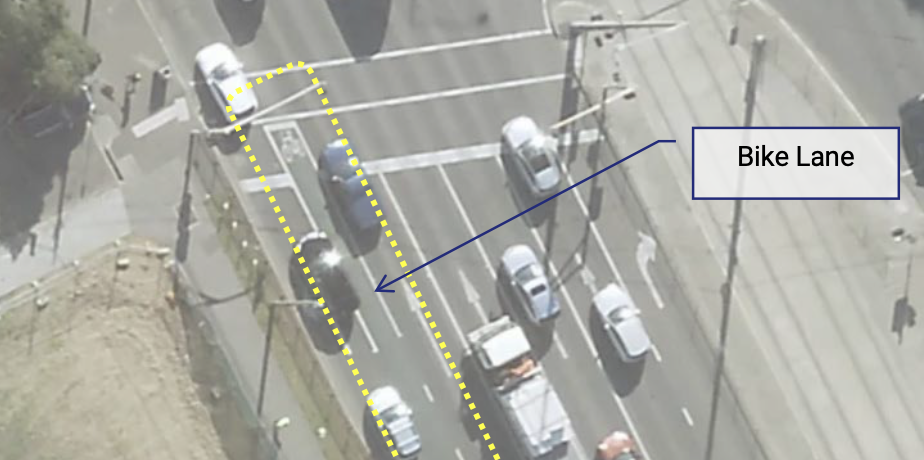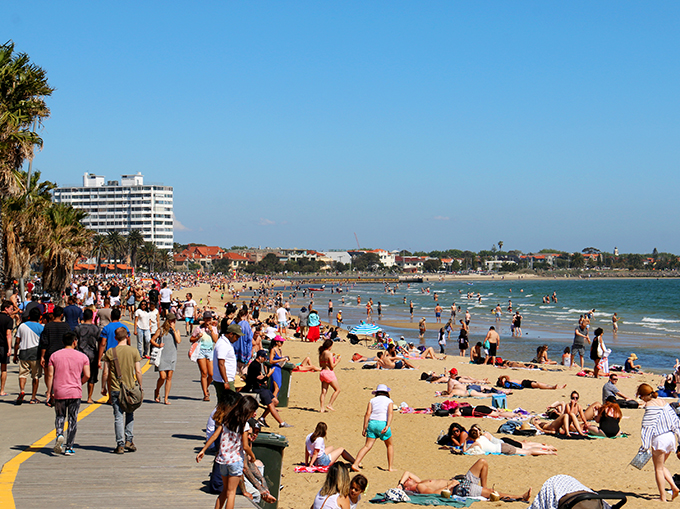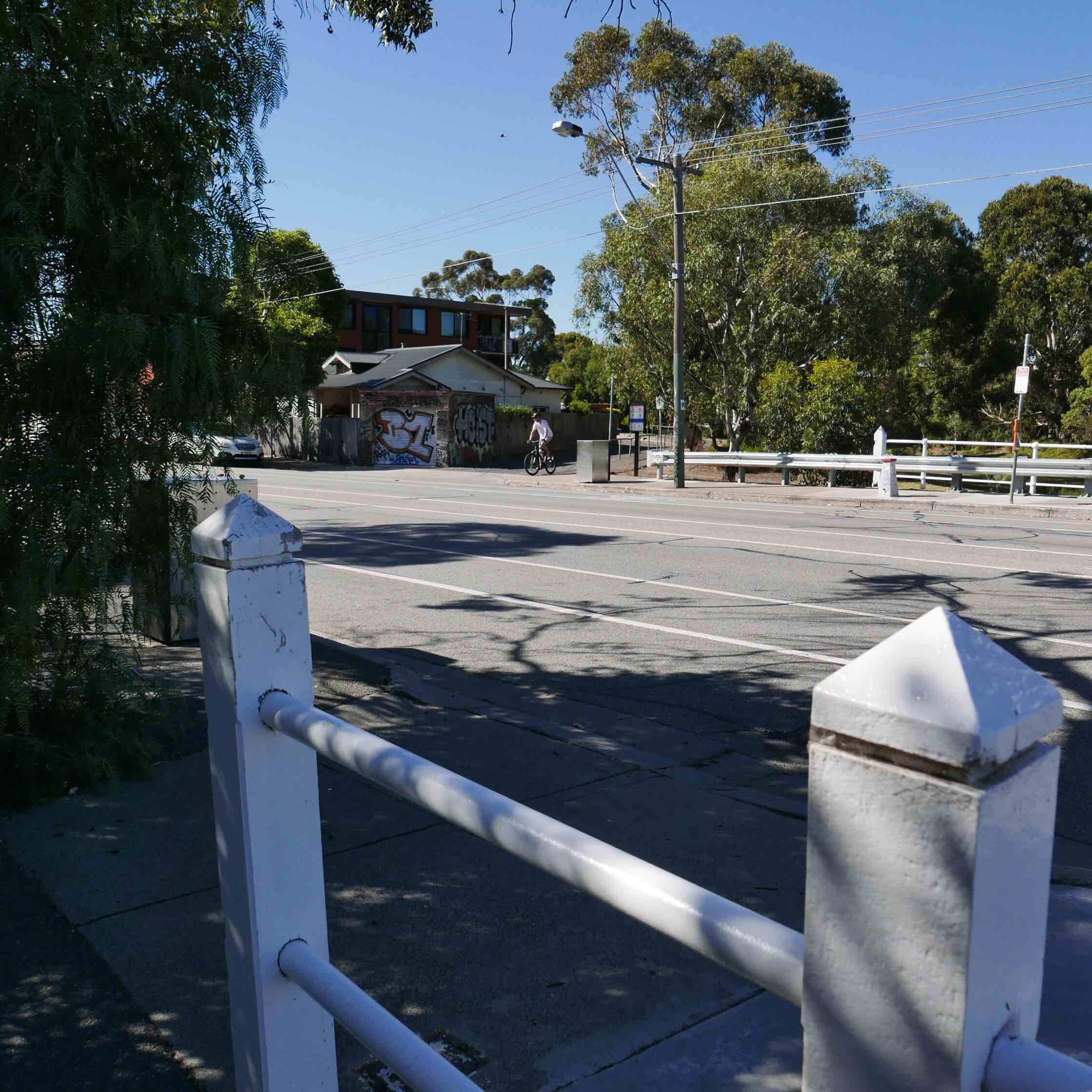TAKE action:
Write to your representatives! contact details are here.
The history
2018: The City of Port Phillip’s integrated transport strategy Move Live Connect designates Albert/Kerferd Roads as a priority bike route. CoPP prepares a Kerferd Rd safety trial, including a protected bike lane, supported by extensive traffic modelling.
However in the 2018/19 budget, the State Government committed $13m to the Shrine to Sea project, upgrading the Albert Rd/ Kerferd Rd boulevard including active transport links.
In the face of this, the Council decided not to proceed with their own trial.
The Shrine to Sea project has proceeded glacially, with extensive community consultation.
Over 2020-2021, a community panel met, considered evidence from subject matter experts, and together developed a vision for the boulevard. Among a suite of thoughtful recommendations: “Bike lanes to be interconnected for the entire length of the boulevard; Use landscaping to define a separate bike pathway on Kerferd Road to isolate bikes from cars.
Kerferd Rd bike lane, 2020
Pop-up lanes project
In 2022, VicRoads announced that as part of their pop-up bike lanes project, “40km of new and protected bike lanes” would be installed in the City of Port Phillip. Most of this was so-called “light touch” measures: renewing paint on existing on-road lanes, wayfaring signs, and speed humps.
The single substantive measure was a trial of a parking-protected bike lane on Kerferd Rd, between Richardson St and Canterbury Rd. This would include a bollard protected bike lane under the light rail near the Albert Rd/Canterbury Rd intersection. Protection from cars is essential on this stretch of road, as can be seen in the photo below.
In April 2022 VicRoads announced that following “community consultation” the trial would not go ahead.
Google streetview of lightrail underpass, showing a vehicle veering dangerously into the bike lane
Current situation:
The Shrine to Sea team is supposed to be releasing a draft plan in “early 2023”. They have been evaluating “5 different bike lane and road configurations”. As this is a Council road, council’s support is required for the project to go ahead. While some councillors have made their support for a protected bike lane clear, others are opposed to any changes. The support of Mayor Heather Cunsolo, who “talks the talk” on cycling, will be crucial.
Planning context
Kerferd Rd is an extraordinarily wide boulevard. At about 60m wide, it is similar to St Kilda Road, but has no tram lines or high density buildings. Few inner city streets offer such ample space for introducing simple safety improvements. There are two vehicle lanes in each direction, a very wide grassy median and a mix of angle parking and parallel parking against the curb. There are almost no driveways. After Canterbury Rd the boulevard is called Albert Rd, and runs alongside Albert Park, with service roads for much of the length. At the south-west end is the sea, at the north east end is the Shrine of Remembrance and the Domain. There are extensive sporting facilities in Albert Park, and nearby schools include Middle Park Primary, Albert Park Primary, South Melbourne Park Primary, and MacRob Girls High School.
Kerferd Rd is not a VicRoads declared road although Albert Road is. The Albert Rd/Kerferd Rd route is a State Strategic Cycling corridor, which are “the most important routes for cycling for transport”.
Strategic cycling corridors, December 2020
Albert Rd/Kerferd Rd is route 2 on the City of Port Phillip’s bicycle network, and has been identified as a high priority by Council for many years.
The need
Council’s original plan for Kerferd Rd identified the need for improvement here:
Kerferd Road has a very high number of crashes compared to other Council-managed roads in Port Phillip. Between 2016 and 2020, there were 24 recorded crashes along Kerferd Road. Of these, 11 involved cyclists; three received serious injuries. This site has the second highest number of crashes in the City of Port Phillip. This crash data has been provided by the Road Crash Information System (RCIS). This system is maintained and operated by the Department of Transport and Victoria Police.
Kerferd Road is a key link for bike riders and connects the Bay Trail bike path to the off-road paths in Albert Park Reserve, the new Anzac Station and to the proposed upgraded bike facilities on St Kilda Road and Moray Street.
Heat map from Strava shows existing heavy bike use of Kerferd Rd, similar to St Kilda Rd or Beaconsfield Parade
What the experts say
Separated bike lanes are essential for better mental and physical health: the Heart Foundation says that Victoria should be investing in separated bike lanes improve health, as well as support local businesses, save households money, and provide independence and freedom, especially for children, teenagers, the elderly and people with a disability. They estimate that $13 would be returned in value for every $1 spent.
Separated bike lanes make financial sense: Infrastructure Victoria says “if we provide alternatives that get more cars off the road, everyone benefits. For drivers, it means less time in traffic and travelling to the city becomes a better experience. For everyone else, the environmental and productivity benefits are huge.” An increase of 55% of people choosing to cycle is achievable and could save every inner Melbourne car driver around 18 minutes in traffic per week.
People with disabilities need bike lanes to get scooters off the footpath: Vision Australia advocacy manager Chris Edwards said vision-impaired Victorians were concerned about being hit by riders or tripping over parked hire scooters. “[In] our view there’s not the infrastructure that supports [scooters] – bike lanes, appropriate places where you can park the scooters so they’re not a hazard – still hasn’t caught up. Without [that]... they’ll be an ongoing issue.” Age article, Jan 2023.
Community views
Broad-based surveys of Port Phillip residents consistently reflect support for protected bike lanes (the pop-up painted bike lanes by the DoT in 2022, on the other hand, were controversial). For example, the most popular element of Council’s Integrated Transport Strategy was “Deliver a network of dedicated and continuous priority bike lanes to create safer routes for all ages and abilities”. Surveys completed in 2018 by the City of Melbourne found that 83% of respondents living in Melbourne and adjacent municipalities (including City of Port Phillip) would aim to ride if a protected bike lane was provided compared to 22% who say they would be confident to ride on conventional painted bike lanes (without buffers).
More community views (from Heart Foundation, Victoria Walks, PECAN, and others) in a joint statement here.
The concerns raised by the anti-bike lane lobby include: “Safety - a bike track between the walking path, nature strips and the road, puts the residents at risk of tripping over the concrete bollards. Many residents along this road are elderly and transition from car, pathway and then into their property and they would be at more risk if this plan goes ahead. Duplication - There is already a bike path for our 'much loved' bike riders. Even bike riders will not benefit from these changes. Parking - Albert Park residents pay a fee to the City of Port Phillip council to park out the front of their own homes. Yet, this plan will reduce current parking for Kerferd Rd residents. Traffic chaos- Kerferd Road currently does not have any traffic issues. One lane WILL cause traffic to bank up at the lights at Beaconsfield Parade. Expenses - it is believed that finance (in excess of $12-16m) has already been earmarked for this project with the Victorian State Government. “
These claims are either entirely without evidence, can be mitigated by good design, or are just the cost side of the ledger, without considering the benefit side. For example: while some car parks may be lost over a rather long stretch, car parking has been prioritised under most suggested plans, and almost all of it will be retained. For example: Kerferd Rd does have traffic issues, not only the safety issues mentioned above but also hooning. Traffic modelling specific to Kerferd Rd indicates that reducing the road to one lane will not induce “traffic chaos”. For example: the expense of cycle lanes is off-set by improved public health, reduced traffic congestion, improved air quality, and reduced greenhouse emissions.












